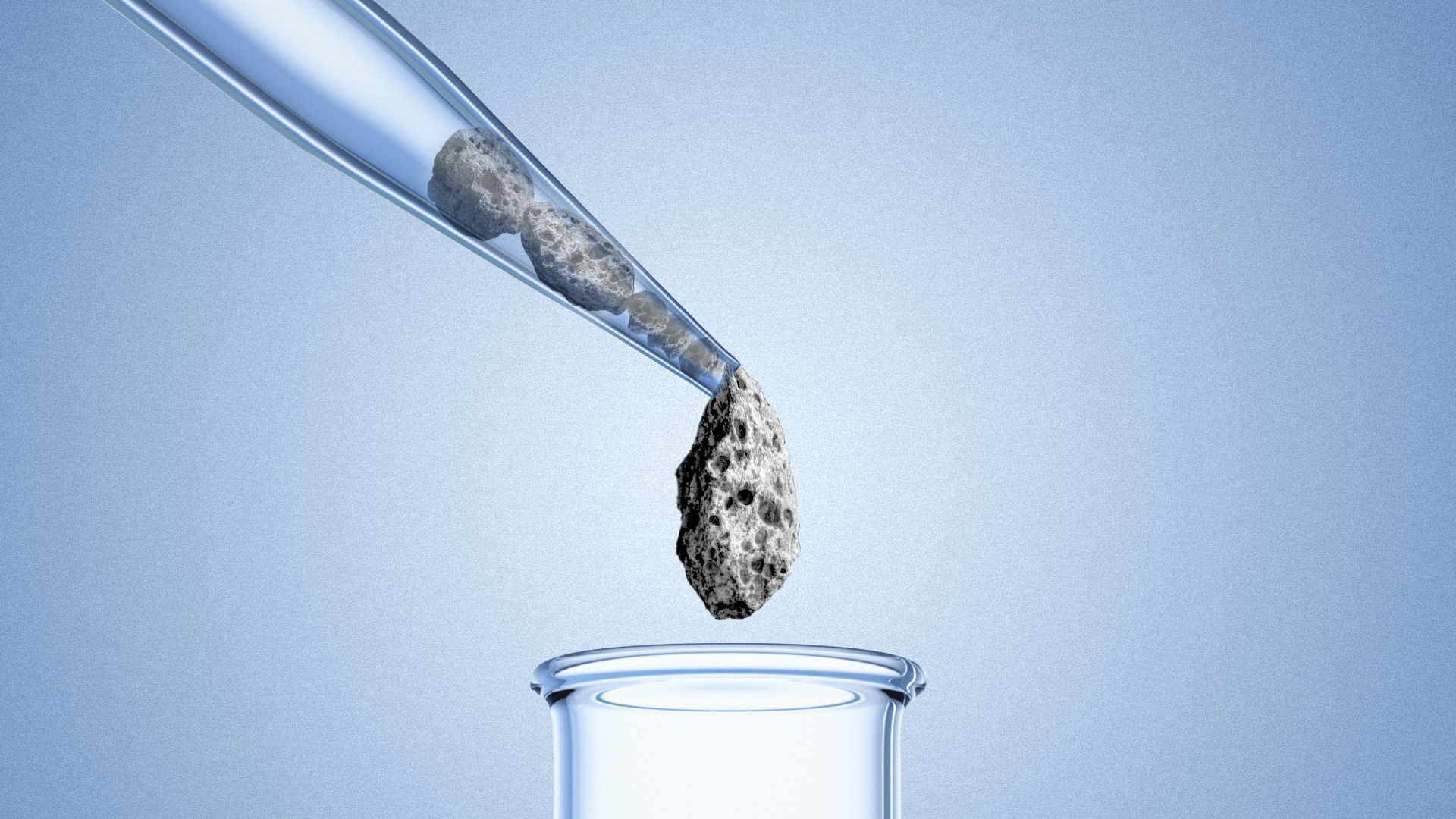
Illustration: Aïda Amer/Axios
Multiple space missions by different countries are bringing rock samples back to Earth from far-off worlds — a trend that could redefine our understanding of the evolution of the solar system.
Driving the news: China’s Chang’e-5 spacecraft is bound for Earth and loaded down with Moon rocks expected to be far younger than those brought back during the Apollo missions. Those samples are expected to arrive in mid-December.
But now, we're getting samples from asteroids, too.
- Japan just returned a sample of an asteroid to Earth collected by the Hayabusa2 mission after launching to space in 2014.
- NASA’s OSIRIS-REx managed to snag what appears to be a large sample of another asteroid thought to represent the leftovers of the planet formation process billions of years ago. That sample is expected to make it back to Earth in 2023.
The big picture: Together, these missions could help fill gaps in scientists' understanding of how the early days of the solar system gave rise to the planets and eventually life.
- By analyzing these samples in labs back on Earth, scientists will have the chance to know exactly how old these cosmic rocks are — and possibly pick out any signs of organic molecules that might act as precursors to life.
- "It is such a puzzle" to figure out how the solar system we know now evolved over billions of years, says Brett Denevi, a planetary geologist at the Johns Hopkins University Applied Physics Laboratory.
Between the lines: Sample return missions allow scientists to use high-powered tools on Earth to analyze material from distant cosmic objects, revealing more than any robotic rover or photos from an orbital mission could.
- While the tech used on spacecraft has progressed rapidly in the last few decades, it will likely never get to the point where a spacecraft can produce analysis as good as what can be done on Earth.
- "It's almost cheaper to just bring a piece back and do it here," the Planetary Society's Casey Dreier told me.
These types of missions also allow scientists to store material for possible future study with tools not yet invented.
- "There will be people who go to those samples 50 years from now with a capability that we can't even conceive of," Dante Lauretta, the principal investigator for OSIRIS-REx, told me.
What's next: These missions are also likely harbingers of things to come. Japan is planning to launch a sample return mission to Mars' moon Phobos in 2024, with an expected return in 2029.
- The sample collected should help scientists figure out the origins of Phobos and Deimos, Mars' other moon.
- NASA also launched the Perseverance rover to Mars this year equipped with tools that will allow it to cache samples for an eventual return to Earth aboard a future mission.
- These current and future missions may eventually open up the possibility of sample return missions to comets, Saturn's moon Enceladus, or other icy, watery bodies in the solar system.
